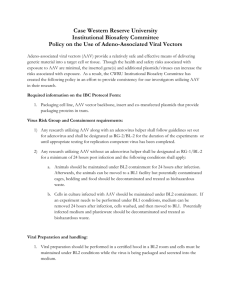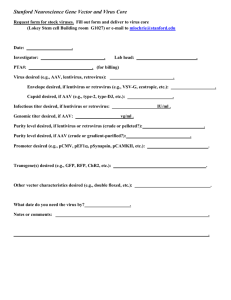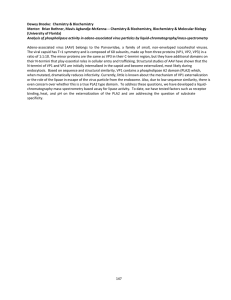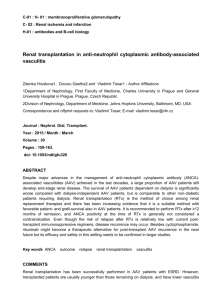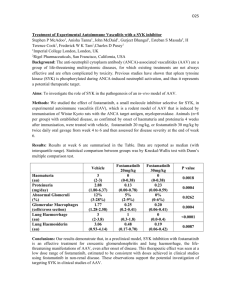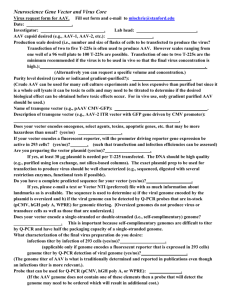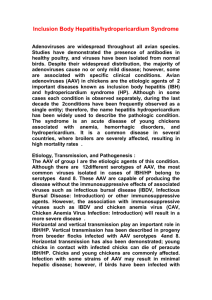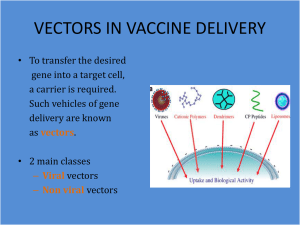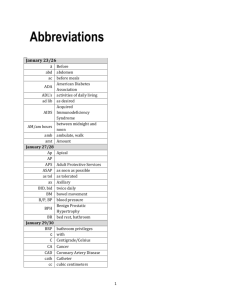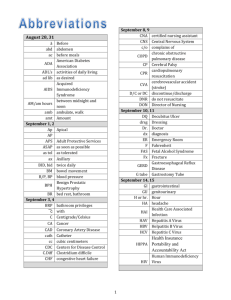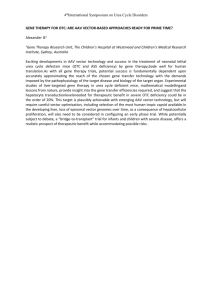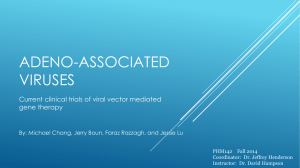helper free system
advertisement
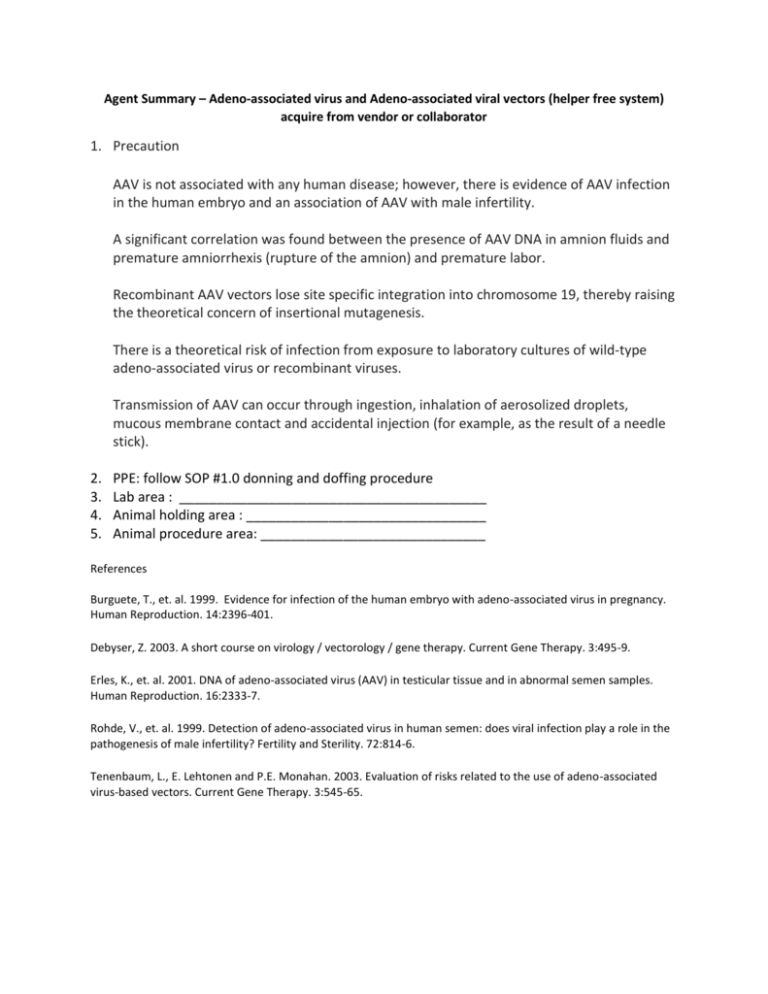
Agent Summary – Adeno-associated virus and Adeno-associated viral vectors (helper free system) acquire from vendor or collaborator 1. Precaution AAV is not associated with any human disease; however, there is evidence of AAV infection in the human embryo and an association of AAV with male infertility. A significant correlation was found between the presence of AAV DNA in amnion fluids and premature amniorrhexis (rupture of the amnion) and premature labor. Recombinant AAV vectors lose site specific integration into chromosome 19, thereby raising the theoretical concern of insertional mutagenesis. There is a theoretical risk of infection from exposure to laboratory cultures of wild-type adeno-associated virus or recombinant viruses. Transmission of AAV can occur through ingestion, inhalation of aerosolized droplets, mucous membrane contact and accidental injection (for example, as the result of a needle stick). 2. 3. 4. 5. PPE: follow SOP #1.0 donning and doffing procedure Lab area : _________________________________________ Animal holding area : ________________________________ Animal procedure area: ______________________________ References Burguete, T., et. al. 1999. Evidence for infection of the human embryo with adeno-associated virus in pregnancy. Human Reproduction. 14:2396-401. Debyser, Z. 2003. A short course on virology / vectorology / gene therapy. Current Gene Therapy. 3:495-9. Erles, K., et. al. 2001. DNA of adeno-associated virus (AAV) in testicular tissue and in abnormal semen samples. Human Reproduction. 16:2333-7. Rohde, V., et. al. 1999. Detection of adeno-associated virus in human semen: does viral infection play a role in the pathogenesis of male infertility? Fertility and Sterility. 72:814-6. Tenenbaum, L., E. Lehtonen and P.E. Monahan. 2003. Evaluation of risks related to the use of adeno-associated virus-based vectors. Current Gene Therapy. 3:545-65.
